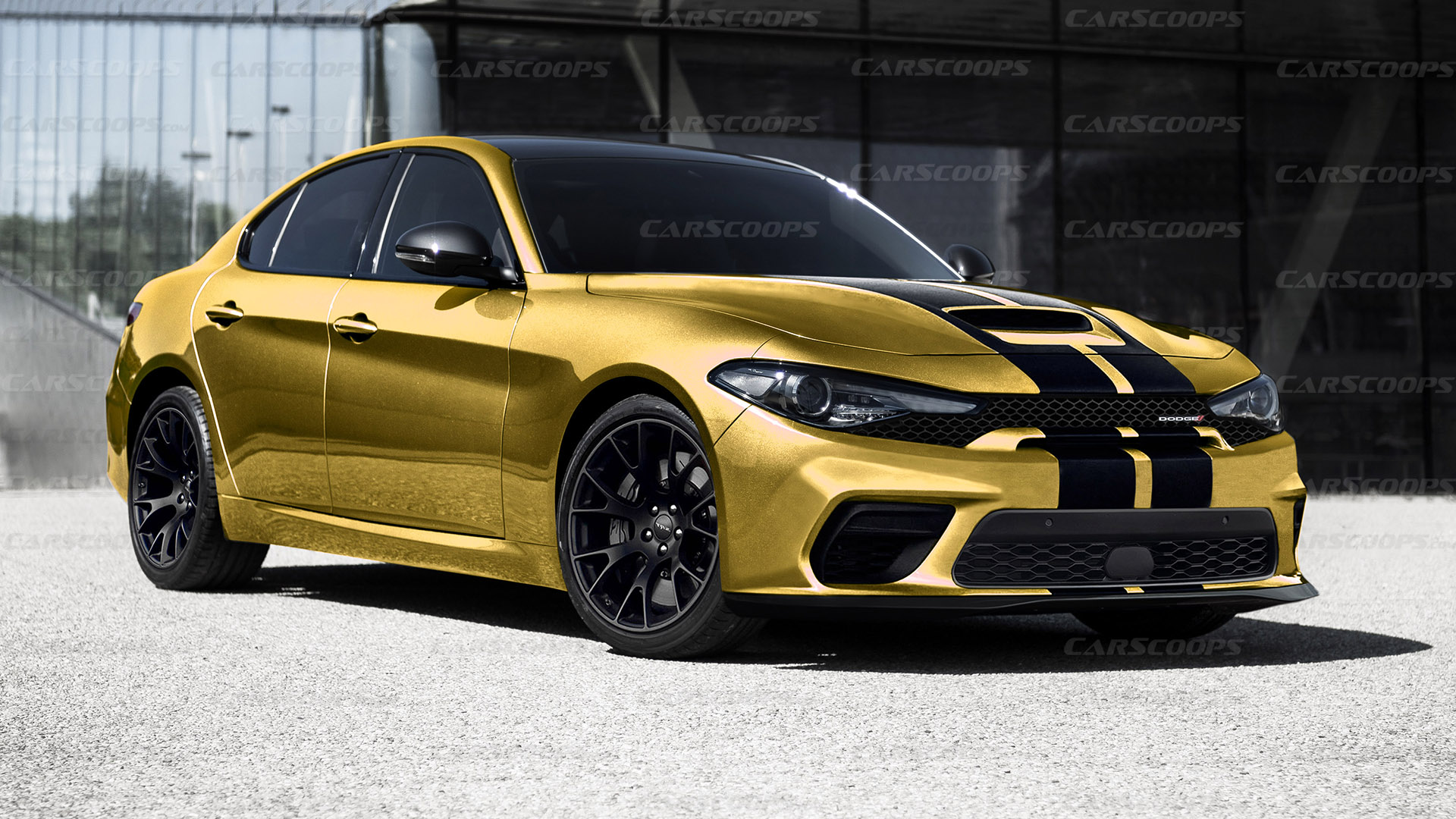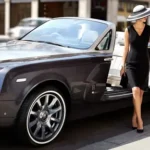This story contains independent illustrations of the imaginary Dodge brand Alfa Romeo Julia, created by Tanos Pappas for CarScoops that has nothing to do with or disapprove of Dodge or Alfa Romeo.
The fact that the upcoming Dodge Hornet will be a redesigned version of the Alfa Romeo Tonale has made us think about what would happen if the two brands of Stellantis went further in terms of badge engineering. Thus, we imagined the version of the Dodge Alpha Romeo Julia as an imaginary Italian-American marriage that never happened.
Sharing the platform is common in our world, so car manufacturers do not try to hide it. However, many car groups and alliances have moved from badge engineering to offering unique body panels for sister models to match the design language of each brand. They range from the entire body to the anterior fascia. Since the Dodge Hornet is close to the second scenario, we decided to keep the minimal changes to the sedan.
Also read: Will Dodge’s tonal restoration damage Alpha Romeo’s image in America?
As you can see from the renters, we have preserved most of the panels of the Julia case and its lighting parts. Of course, the changes are to the front with a redesigned bumper and bonnet inspired by the Dodge Charger SRT Hellcat Redeye. The new grid combines Giulia’s extended headlights and effectively replaces the iconic Scudetto of Alpha Romeo. Large bumper inserts and a clear splitter with a set of black stripes and a convex hood with a built-in recess create a very aggressive look.
The rest of the sculpted body remains a stock, but a new set of black-painted SRT wheels and an updated color palette may add a bit of American flavor to the Italian sedan. After all, Dodge is known for its very talented color and decoration department, which attracts buyers to the old charger and Challenger. It expands inside the cabin with SRT sports seats and new upholstery options.
What would you call it?

If Stellantis were serious about putting Dodge emblems on their Alfa Romeo, they would need a new name. The Giulia measures 4,639 mm (182.6 inches) in length, which places it in a segment below the 5,084 mm (200.2 inches) Dodge charger and is shorter than the stopped 4,849 mm (190.9 inches) Dodge Avenger. This means that any Dodge or Plymouth board in front of it can be restored. Several of our favorite versions were Plymouth’s Fury and Turismo.
Despite its name, the power unit that matches the Dodge sports sedan comes from the Giulia brother’s sporty Veloce and Quadrifoglio finishes. The first was 276 hp. (206 kW / 280 PS) is equipped with a 2.0-liter four-cylinder turbocharger, and the second is 503 hp. (375 kW / 510 PS) The dual turbo gets a 2.9-liter V6. To avoid any internal competition, Dodge can opt for a less powerful engine, which makes less pony than the V6 charger in the basic specification. However, the unique driving dynamics offered by Alfa Romeo’s Giorgio platform make it a celebration to drive the new Dodge sedan.
Also read: The Dodge makes fun of the electric muscle car concept, which looks like a ’68 charger

And now we give freedom to our imagination, we have to solve real problems. Alpha Romeo Julia has not been successful in the U.S. market in terms of sales, and while the Dodge twin can increase its sales, it can never be the best seller. Sedans are a slowly dying breed and it can be difficult for Dodge buyers to overcome stereotypes about Italian cars and their reliability.
The age of the other elephant model in the room. The Giulia was released in 2015, so it makes no sense to introduce a seven-year-old sedan with Dodge makeup. However, we have to admit that our fictional Dodge Fury / Turismo feels younger compared to the seventh generation charger released in 2010 and the third generation Challenger introduced in 2008.
In conclusion, we know that our rendering will remain fantastic, and that’s probably a good thing. Recently, Stellantis detailed the four modular EV architectures, which will be widely used throughout the brand portfolio, including Alfa Romeo and Dodge. However, we hope that the upcoming models will have their own unique design. This is because one of the main ideas of Stellantis CEO Carlos Tavares is that he is confident that there will be enough differentiation in future EVs, despite the fact that he has recently used common ground.







